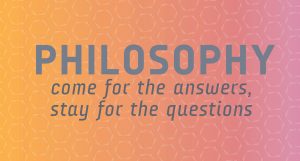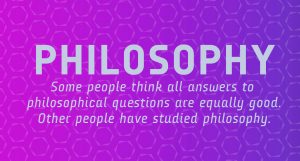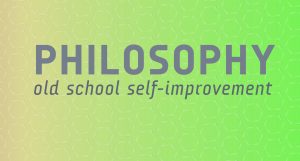culture
The Demand for Philosophers
Last week I was part of a panel invited to discuss “The State of Philosophy: Challenges, Threats, and Strategies” at the Eastern Division Meeting of the American Philosophical Association (APA).
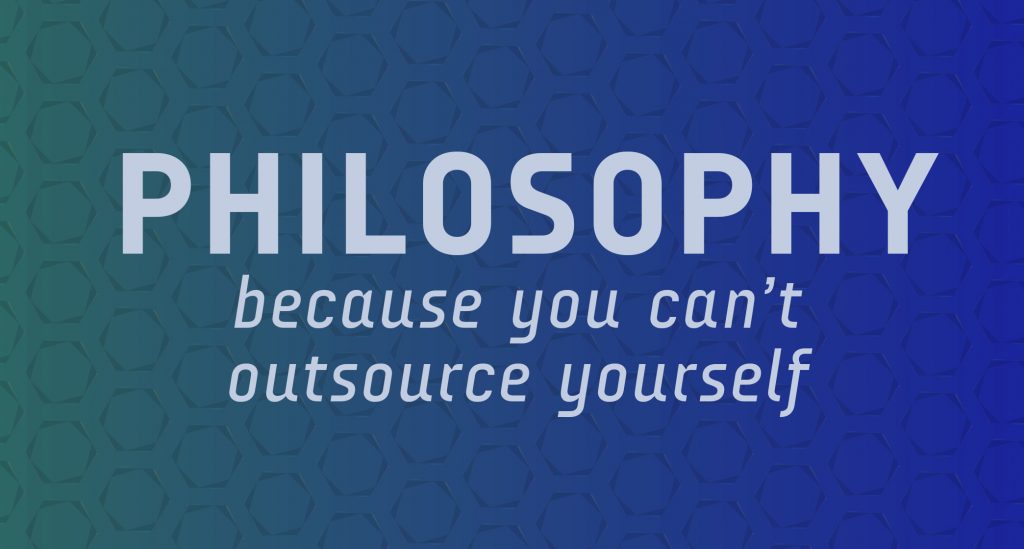
I and my co-panelists each shared brief remarks on various topics. Sally Haslanger (MIT) discussed threats to academic freedom, particularly the academic freedom of scholars working on topics related to diversity and equality, which is being increasingly targeted by rightwing politicians and activists. Fritz McDonald (Oakland) enjoined philosophers to get involved in the APA and volunteer for positions and committees in the organization. Eric Schwitzgebel (UC Riverside) shared some of his valuable work on demographic trends in philosophy, focusing on philosophy majors (see here).
I talked about the demand for people with philosophy PhDs in the U.S. (for the purposes of the discussion, “philosophers”).
I first noted some evidence that the demand for philosophers is declining. Cuts to philosophy departments and the elimination of philosophy degree programs (see here for some examples) continue, and though new programs are occasionally created, losses seem to outweigh the gains. The number of tenure-track jobs in philosophy has not been growing over the long term and is down compared to ten years ago (464 advertised jobs in 2011-12 cycle compared to 345 in the 2021-22 cycle, 547 in 2012-13 compared to 346 in 2022-23, 356 in 2013-14 compared to a projected 332 in 2023-24).
What are some possible causes of the decreased demand for philosophers?
- Enrollment declines at some schools, causing budget cuts and closures.
- Declines in the percentage of bachelor’s degrees in the humanities conferred by four-year institutions. (Though philosophy has “held steady at 0.39%-0.40% since 2015-2016,” it is not clear that administrators are going to be looking at such fine-grained detail when setting the agenda for cuts.)
- In a majority of U.S. states, there have been decreases in state expenditures on public colleges and universities (e.g., there was less spent by states on higher ed in 2020 than in 2008).
- With decreased state funding, many institutions are even more reliant on grants, and philosophers are not major grant-getters (the sciences bring in over 125 times more in grants than the humanities).
(In response to this point, Sally Haslanger rightly pointed out that philosophy departments may be a financial plus for universities as the revenue from philosophy enrollments may exceed the relatively small costs of having a philosophy department; however, Fritz McDonald, if I recall accurately, raised the question of whether, of the various disciplines for which this cost-benefit analysis is correct, philosophy is particularly good in this regard—say, in comparison to English, which might be just as cheap but with more enrollments.)
There are also broader social changes that I think are relevant to the demand for philosophers. These are changes that philosophers can do little to nothing about, and it is not clear that all of them are, on balance, changes for the worse (though they may be). These include:
- Fracturing of a hegemonic cultural canon.
There’s no longer a manageable body of cultural knowledge that is widely understood to be what an educated person ought to know, and so whatever role philosophers played in introducing people to that is diminished. Some causes of this seem to be:- “Entertainment explosion”: the massive increase in a wider array of easily accessible opportunities for entertainment means there’s less of a shared culture. People have more options, a greater ability to exercise choice among them, and more of a capacity to easily create entertainment for others (social media).
- Both good (anti-prejudicial) and bad (anti-judgment) forms of cultural egalitarianism means it is harder to make the case that the bits of culture philosophy focuses on are especially worth attention; the perceived value of informed cultural and personal criticism/judgment is declining.
- Vocationalist creep.
Universities seem to be increasingly sending the message that their chief aim is to prepare students for the job market, which is both a self-fulfilling prophecy and a self-destructive survival strategy.- It’s self-fulling in that it lends the reinforcing authority of the university itself to the instrumentalization of education. As universities increasingly understand themselves as handmaidens to the job market, aspects of education not obviously or directly connected to the employment are deprioritized. The number of students choosing a liberal arts major goes down, while the number of students choosing a business major go up (NCES).
- It’s self-destructive in that it positions the university as an increasingly inefficient middleman between employee and employer. Already some universities are offering training modules by corporations as part of their curriculum. How long until Google Certifications are seen as a much better value than a BA, and more and more students skip the university altogether?
- Technology.
- Information is widely available, and in many domains more people have more opportunity to learn facts and skills outside institutional settings than ever before because of information technology. (People in general may not be especially skillful at sorting and assessing the abundance of information available to them, but it’s unclear how often one needs to apply such skills, given their aims.)
- Skills taught at universities may increasingly thought of as unnecessary to learn because we can automate them. Search engines are ways of automating research, and now we have large language models (LLMs) for automating our writing. (What these means may lack, perhaps glaringly clear to some experts, is much less visible to their typical user than what said means deliver.)
- Education has trouble competing for attention with all of the world’s entertainment and all of the friends of each student, which each student now, via their phone, has access to at all times. The entertainment explosion has led to reduced attention spans, resulting in professors lowering standards, in turn resulting in lower quality output from students, and so decreasing the educational value of college courses.
- Artificial Intelligence (AI) will be a cheaper alternative teacher, probably starting with courses in which there is no physical equipment or activity. (AIs replacing course instructors may be the most conservative prediction regarding how AI will alter education.)
Additionally, there is no major growth in demand for philosophers outside of academia. While there are a number of success stories of philosophy PhDs finding great non-academic jobs (I should remind people of this page) many of these are one-offs which do not indicate burgeoning trends of particular industries finding themselves in need of a substantial number of philosophers. (AI may be a sector in which a lot of philosophers get hired but it is probably too early to tell; it is not clear that the increased demand in academia for philosophers working on AI-related topics means an increase in overall demand for philosophers, or merely a change in which areas of specialization experts are being sought.)
In light of these and other factors that may contribute to a lowered demand for philosophers, what, if anything should we do?
I acknowledge that some may argue that this is not a problem worth doing anything about. The status quo is far from perfect, after all, and change is inevitable. Yet I expect most people reading this—most philosophers—have several reasons for thinking that a diminished demand for philosophers is worth addressing, if possible. I’ll continue under the assumption that that’s correct.
In thinking about what to do, we should avoid the futile. We cannot stop or turn back technology. We cannot change the major economic institutions of society. Rather, we must be realistic about existing and likely technology and we must work within our economic institutions. As distasteful as it may seem to some of you, think of us philosophers as having a “product” we’re trying to sell. That product is philosophy. It comes in a variety of formats: courses, articles, books, advising, videos, podcasts, etc. What is our marketing strategy?
I’m not a marketing expert, so what follows is more a guess than anything else.
It seems that, fundamentally, our market is undergraduates. This is not because they’re the only consumers of philosophy, but they’re the consumers on which so much of our activities depend. At most institutions, being employed as a philosopher means (among other things) teaching philosophy to undergraduates; doing that affords some people the opportunity to engage in philosophical research. Undergraduate enrollments also affect, through multiple mechanisms over the long term, graduate enrollments, which also in turn affect the extent to which philosophy professors can focus on research. Further, it would seem reasonable to think that the number of undergraduates who take philosophy courses is related to the number of people in the general public who form a non-academic constituency for philosophy which is beneficial to philosophy politically and economically.
So we ought to focus on how philosophy and the places philosophy is “sold” (that is, colleges and universities) are “advertised” to that core market of current and prospective undergraduates. Universities and colleges are their own marketers, so we can ask whether we think their marketing strategy is effective and sustainable.
I don’t think it is. By focusing increasingly on conveying the message that they are ideal institutions for preparing students for jobs, universities and colleges are selling themselves short. Universities have so much more to offer than that, and businesses can and do train their new employees, anyway. Better for universities to more enthusiastically promote what they, compared to others, are especially well positioned to deliver. What is that? In short: self-improvement.
While job training makes you better for others, self-improvement makes you better, primarily, for yourself. Given the high concentration of self-obsession in our cultural atmosphere, this should be an easier sell than ever (even if it’s not easy). The idea that education is a form of self-improvement is an old one, but here’s a relatively recent version of it I’ve noted here before, from Talbot Brewer (UVA):
What happens in [college], when it’s in good working order, is a kind of intensification of a form of reflective self-cultivation that can and ought to be a continuous life activity. It is the stuff of a good life, not some mere instrumental means. It can be intertwined with, and can deepen, almost any subsequent life activity (including many forms of work and political engagement).
If universities trumpeted the value of “reflective self-cultivation” and spent as much energy advertising how good they are at producing opportunities for reflection and self-cultivation as they do on student employability, that could send a loud and valuable message to students. So I think that one thing we should do is encourage universities and colleges to better promote the distinctive value of philosophy and the study of the liberal arts more broadly.
But how do we get universities to take up the mission of sending that message? What you need are people in positions of power who care about sending that message. That’s us (but not just us: there are potential allies across a wide range of disciplines). And so it would serve philosophy well if more philosophers took up administrative positions at the colleges and universities. We don’t need philosopher kings, but philosopher deans and associate deans, philosopher provosts, and philosopher university presidents would be helpful.
This point was reinforced by Andy Cullison (Cincinnati) at the session, who also noted that there seems to be some resistance among philosophers towards taking up administrative positions. He recommended that the APA hold sessions about or with philosophers in administrative positions. He also urged that someone collect more data about the number of philosophy PhDs in college or university-level administrative positions (any volunteers?).
(Some recent examples were mentioned. My former colleague, Jennifer Frey, recently became the founding dean of the Honors College at the University of Tulsa, which features a curriculum focused on philosophical and other classic texts. Ann Cudd is the new president of Portland State University.)
I’ve sketched in rather broad strokes here both diagnosis and prescription. I’ll admit I’m not sure how feasible my suggestion is, or how much of a difference it might make. I’d be happy to hear you thoughts on it and the general situation we face. Your suggestions as to what ought to be done, if anything, are, as usual, welcome.
Related: “Against Reducing the Number of Philosophy PhDs“
The post The Demand for Philosophers first appeared on Daily Nous.
How Grief Affects Autistic People Differently
There is an episode of Buffy the Vampire Slayer that I think about often, still as gut-wrenching today as it was when it first aired. “The Body” follows the immediate aftermath of the death of Buffy’s mother, Joyce: her cold face, her stiff limbs; the crack of her ribs when her daughter attempts CPR. It also follows each character’s individual response to grief, a reminder that there is no right…
Subversive Archaism: Troubling Traditionalists and the Politics of National Heritage – review
In Subversive Archaism: Troubling Traditionalists and the Politics of National Heritage, Michael Herzfeld considers how marginalised groups use nationalist discourses of tradition to challenge state authority. Drawing on ethnography in Greece and Thailand, Olivia Porter finds that Herzfeld’s concept of subversive archaism provides a useful framework for understanding state-resistant thought and activity in other contexts. A longer version of this post was originally published on the LSE Southeast Asia Blog.
Subversive Archaism: Troubling Traditionalists and the Politics of National Heritage. Michael Herzfeld. Duke University Press. 2022.
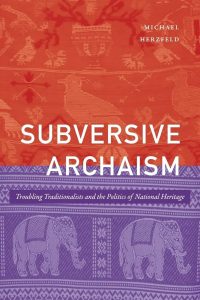 “The nation-state depends on obviousness because, in reality, its own primacy is not an obvious or logical necessity at all. It is presented as a given, and most people accept it as such. Implicitly or explicitly, subversive archaists question it” (123).
“The nation-state depends on obviousness because, in reality, its own primacy is not an obvious or logical necessity at all. It is presented as a given, and most people accept it as such. Implicitly or explicitly, subversive archaists question it” (123).
The excerpt above encapsulates the central thesis of the social anthropologist and heritage studies scholar Michael Herzfeld’s Subversive Archaism: Troubling Traditionalists and the Politics of National Heritage. That being said, that the modern nation-state is widely accepted as the primary unit of territorial and cultural organisation, but that there are a group of people, subversive archaists, who question this rhetoric. Subversive archaism challenges the notion that the nation-state, constrained by bureaucratic organisation and with an emphasis on an ethnonational state, is the only acceptable form of polity. Subversive archaists offer an alternative polity, one legitimised by understandings of heritage that date back further than the homogenous ‘collective heritage’ proposed in state-generated discourses for the purpose of creating a ubiquitous representation of national unity (2). As Herzfeld suggests, subversive archaists instead reach into the past to reclaim older and often more inclusive polities and understandings of belonging, and in doing so, they utilise ancient heritage to challenge the authority, and very notion, of the modern nation-state.
Subversive archaists instead reach into the past to reclaim older and often more inclusive polities and understandings of belonging
Herzfeld examines the concept of subversive archaism through comparative ethnography, drawing on long-term ethnographic fieldwork with two communities: the Zoniani of Zoniana in Crete, Greece, and the Chao Pom of Pom Mahakan, Bangkok, Thailand. At first, the two communities appear geographically and culturally distinctively dissimilar. However, they share one important feature neither country has ever been officially colonised by a Western state. Herzfeld ascribes the term “crypto-colonialism”, a ‘disguised’ form of colonialism, to both Greece and Thailand, as states that despite never being officially colonised, were both under constant pressure to conform to Western cultural, political, and economic demands. Herzfeld explains that such countries place a great emphasis on their political independence and cultural integrity having never been colonised, yet many forms of their independence were dictated by Western powers.
In identifying themselves with the heroic past of the nation state, [subversive archaists] legitimise their own status as rightful members of the nations in which they now find themselves marginalised.
In Chapter Two, Herzfeld explores the historical origins of the images and symbols mimicked by subversive archaists to challenge the dominant, often ethnonationalist, narrative of the nation-state. Subversive archaists ransack official historiography and claim nationalist heroes as their own, and in identifying themselves with the heroic past of the nation state, they legitimise their own status as rightful members of the nations in which they now find themselves marginalised. Rather than reject official narratives, subversive archaists appropriate them, in ways that undermine state bureaucracy. For example, the Zoniani (and many Cretans) do not reject the official historiography of the state, which emphasises continuity with Hellenic culture. In fact, they fiercely defend it, and go one further, by citing etymological similarities between Cretan dialects that bear traces of an early regional version of Classical Greek. In doing so, they make claims that they have a better understanding of history than the state bureaucrats.
Chapter Three explores belonging and remoteness through kinship structures and geographical location. Herzfeld highlights how the nation-state uses the symbolic distancing of communities as remote or inaccessible as a tool to marginalize communities. Pom Mahakan is located on the outskirts of Bangkok, the capital of Thailand, and nowadays Zoniana is accessible by road. Herzfeld argues that the characterisation of these communities as remote and inaccessible is applied by hostile bureaucracies rather than by the communities themselves as an extreme form of intentional political marginalisation.
Zoniani society is still structured by a patrilineal clan system, and Chao Pom society by a mandala-based moeang system. These structures represent an older, and alternative, system of polity to the modern bureaucratic nation-state.
In Chapter Four, Herzfeld proposes that we reframe the assumption that religion shapes cities and instead think about how cosmology shapes polities. In particular, how Zoniani society is still structured by a patrilineal clan system, and Chao Pom society by a mandala-based moeang system. These structures represent an older, and alternative, system of polity to the modern bureaucratic nation-state. For example, the Chao Pom embrace religious and ethnic minorities, arguing that diversity is representative of true Thai society, and that tolerance and generosity are true Thai ideals. The notion of polity itself is the focus of Chapter Five which explores how Pom Mahakan and Zoniana have cosmologically distinct identities that, when conceptualised as part of the same system as the nation-state, both mimic and challenge the state’s legitimacy, thus inviting official violence.
Herzfeld argues that what sets subversive archaists apart from the “state-shunning groups” described by Scott […] is their ‘demand for reciprocal respect and their capacity to play subversive games with the state’s own rhetoric and symbolism’
Herzfeld explains how neither the Zoniani nor Chao Pom fit into the James C. Scott’s concept of “the art of not being governed,” applied to Zomian anarchists who flee from state centres into remote mountainous regions in northeastern India; the central highlands of Vietnam; the Shan Hills in northern Myanmar; and the mountains of Southwest China. Herzfeld argues that what sets subversive archaists apart from the “state-shunning groups” described by Scott, but also makes them representative of a widespread form of resistance to state hegemony, is their “demand for reciprocal respect and their capacity to play subversive games with the state’s own rhetoric and symbolism”. Arguably, the reason that the Zoniani and Chao Pom can demand ‘reciprocal respect’ is related to their ethnic, historical, and cultural affiliation with the majority that marginalises them. The ethnic minorities of Zomia do not benefit from the same types of affiliation.
Ultimately, Herzfeld’s model of subversive archaism offers us an example of understanding how marginalised groups challenge and subvert authority
Ultimately, Herzfeld’s model of subversive archaism offers us an example of understanding how marginalised groups challenge and subvert authority. Herzfeld is not proposing that any given group needs to fit neatly into the category of subversive archaists, but rather how some groups reach back into the past to offer an alternative future. In Chapter Eight, Herzfeld explores the future of subversive archaist communities, and also how subversive archaism might mutate into nationalist, and potentially dangerous, movements. The Chao Pom embrace ethnic and religious minorities on the grounds that acceptance and inclusion are true Thai ideals. However, there are dangers to invoking ideologies attached to ‘true’ ideologies of national cultures and traditions, and other types of communities can utilise the rhetoric of subversive archaism. For example, in the wake of the COVID-19 pandemic, “antimaskers” use the language of “liberty” and “democracy” against the modern bureaucratic state, seeking to transform the present into an idealised national past.
I was initially sceptical about who qualified as a subversive archaist. At first, the term seemed too rigid, a community had to be marginalised by the state authority, but associate themselves with the majority and use the language of the state to legitimise themselves their alternative polity. Then, the term seemed too broad, it is not specific to a certain geography, ethnic identity, or religion, and can apply to religious and non- religious groups. Subversive archaism might help us make sense of the Chao Pom and the Zoniani, but who are the subversive archaists of the contemporary world? Then, one morning, when listening to a podcast from the BBC World Service covering the inauguration of India’s controversial new parliament building, I heard a line of argument, from the Indian historian Pushpesh Pant, that struck me as being rooted in subversive archaism.
When asked about the aesthetics of the new parliament building, Pant remarked “I think it is a monstrosity… If the whole idea was to demolish whatever the British, the colonial masters, had built, and have a symbolic resurrection of Indian architecture, I would even go, stick my leg out and say Hindu architecture, it should have been an impressive tribute to generations of Indian architectural tradition Vastu Shastra. Vastu Shastra is the Indian science of building, architecture.” He goes on to say: “How does this symbolise India?”
I suspect that given the rise of nationalist movements across the globe, the tools of subversive archaism, rather than subversive archaists groups per se, will become all the more visible.
In invoking the Vastu Shastra, the ancient Sanskrit manuals of Indian architecture, and the Sri Yantra, the mystical diagram used in the Shri Vidya school of Hinduism, Pant demonstrates his deep understanding of ancient Indian architecture and imagery. And in doing so, he highlights the missed opportunities of the bureaucratic state in designing their new parliament building to create a building that was truly representative of archaic Indian architecture. He does what Herzfeld describes as “playing the official arbiters of cultural excellence [here, the BJP] at their own game”. I suspect that given the rise of nationalist movements across the globe, the tools of subversive archaism, rather than subversive archaists groups per se, will become all the more visible.
This book review is published by the LSE Southeast Asia blog and LSE Review of Books blog as part of a collaborative series focusing on timely and important social science books from and about Southeast Asia. This review gives the views of the author, and not the position of the LSE Review of Books blog, the LSE Southeast Asia Blog, or the London School of Economics and Political Science.
Main Image Credit: daphnusia images on Shutterstock.
Spiritual Contestations: The Violence of Peace in South Sudan – review
In Spiritual Contestations: The Violence of Peace in South Sudan, Naomi Pendle dissects the interactions between Nuer- and Dinka-speaking communities amid national and international peacebuilding efforts, exploring the role of spiritual culture and belief in these processes. Based on extensive ethnographic and historical research, the book offers valuable insights for scholars and policymakers in conflict management and peace-building, writes Nadir A. Nasidi.
Spiritual Contestations: The Violence of Peace in South Sudan. Religion in Transforming Africa Series, Vol. Number: 12. Naomi Ruth Pendle. James Currey. 2023.
 The history of South Sudan includes a series of protracted conflicts and wars, which have attracted the attention of many researchers covering their socio-economic and political dimensions. Following in this vein, Pendle’s Spiritual Contestations explores the interactions between Nuer- and Dinka-speaking communities within the context of national and international peace-making processes. This also includes the role of the clergy and traditional rulers in such processes, which is complicated by politics, sentiments, and the urge to profit from the South Sudan’s protracted conflicts. Pendle also assesses the experiences of ordinary South Sudanese people in peace-making, including their everyday peace-making meetings. The book is divided into three sections and 14 engaging chapters based on the author’s ethnographic and historical research conducted between 2012 and 2022 among the Nuer- and Dinka-speaking peoples.
The history of South Sudan includes a series of protracted conflicts and wars, which have attracted the attention of many researchers covering their socio-economic and political dimensions. Following in this vein, Pendle’s Spiritual Contestations explores the interactions between Nuer- and Dinka-speaking communities within the context of national and international peace-making processes. This also includes the role of the clergy and traditional rulers in such processes, which is complicated by politics, sentiments, and the urge to profit from the South Sudan’s protracted conflicts. Pendle also assesses the experiences of ordinary South Sudanese people in peace-making, including their everyday peace-making meetings. The book is divided into three sections and 14 engaging chapters based on the author’s ethnographic and historical research conducted between 2012 and 2022 among the Nuer- and Dinka-speaking peoples.
Pendle’s Spiritual Contestations explores the interactions between Nuer- and Dinka-speaking communities within the context of national and international peace-making processes
Chapter one describes the historical evolution of the hakuma (an Arabic-derived, South Sudanese term for government) in the 19th century and the physical violence which South Sudan has experienced through its mercantile and colonial history, as well as many years of war that influenced contemporary peace-making. It also shows how the hakuma claimed “divine” powers (as a result of god-like rights the government arrogated to itself). Chapters two, three, four and five discuss the contemporary making of war and peace, oppositions to the Sudan government’s development agenda, the 1960s and 1972 Addis Ababa Peace Agreement and South Sudan’s 2005 Comprehensive Peace Agreement. These chapters also examine the Wunlit Peace Meeting, which was a classic example of what the author calls “the ‘local turn’ in peace-making whereby international actors championed ‘local’ forms of peace-making” (35-119).
Chapter seven largely focuses on the escalation of violence in Warrap State as a result of having an indigenous hakuma alongside ever-evolving ideas of land, property, resources, and cattle ownership. Chapters seven to fourteen then focus on the proliferation of peace meetings in Gogrial and the cosmological crisis brought by the years of war (which involves the disruptions or perceived threats to cosmic order and by overarching beliefs about the universe held by the Nuer- and Dinka-speaking communities), a crisis which was met with a proliferation of prophets. This section also covers wars in South Sudan since 2013, the prevalence of revenge in giving meaning to armed conflicts, the post-2013 power of the Nuer prophets, the post-2013 era in Warrap State, and the role of the church in South Sudan’s peacekeeping through the activities of Dinka priests who are popularly known as the baany e biith.
Although the title of the book appears oxymoronic, the author argues that peace remains violent when understood in a context wherein the methods employed to establish or foster peace involve force, suppression, and coercion
Although the title of the book appears oxymoronic, the author argues that peace remains violent when understood in a context wherein the methods employed to establish or foster peace involve force, suppression, and coercion. This is especially true in the context of South Sudan’s “unsettled cosmic polity”; a polity characterised by periods of questioning, restructuring or conflict in response to perceived disruptions of cosmic order and balance, which further push the boundaries of contemporary discourse on the meaning and conceptualisation of peace and peace-making (179-189).
The author further explains how […] religious connotations are used to contest the moral logic of government, particularly in the rural areas of South Sudan
Pendle bases her arguments on the “eclectic divine” and religious influences among communities located around the Bilnyang River system. The author further explains how these religious connotations are used to contest the moral logic of government, particularly in the rural areas of South Sudan. Through this means, the author clarifies how religion and religious assertions shape the peoples’ social and political life. This includes issues such as spiritual and moral contestations, as well as the making and unmaking of norms within the “cultural archive” (including traditional, economic and historical recollections) that reshape the violence of peace, feuds, and its associated political economies. She advances this argument in her study of conflicts over natural resources and cultural rights that are understood as cosmological occurrences by the people of South Sudan, the meanings of war and peace, and the assertion of power within these events.
Pendle states that to understand the real politics and violence of peace-making, one must also understand ‘how peace-making interacts with and reshapes power not only in everyday politics’, but also ‘in cosmic polities’
Pendle states that to understand the real politics and violence of peace-making, one must also understand “how peace-making interacts with and reshapes power not only in everyday politics”, but also “in cosmic polities” (75-99). Looking at the nature of human societies, she concludes that they are largely hierarchical, mostly located within the purview of a cosmic polity that is populated by “beings of human attributes and metahuman powers who govern the people’s fate” (7).
Basing her arguments on Graeber and Shalins’ research, Pendle observes that South Sudanese society’s secular governments and self-arrogating divine powers can pass for a cosmic polity. It is within this context that the South Sudanese Arabic term for government, ‘hakuma’ operates; the term refers not only to government, but to a broad socio-political sphere including foreign traders and slavers.
Pendle also documents the various ways in which South Sudanese people use cultural symbols, rituals, norms, and values, as well as theology, to contest ‘predatory power and to make peace’
Pendle also documents the various ways in which South Sudanese people use cultural symbols, rituals, norms, and values, as well as theology, to contest “predatory power and to make peace” (75). Examples include the Dinka use of leopard skin (which is used for conflict resolution between two warring factions), cultural diplomacy through festivals, as well as the ceremonial blessings of cattle as a symbol of wealth.
The book is not without flaws. The author often oscillates between the use of ordinal and cardinal numbers when a chapter is mentioned Even if this is done for convenience, it is at the expense of chronology and consistency. Although written in plain and straight-to-the-point language, the author’s use of compound-complex sentences throughout the book makes it difficult for readers to comprehend easily.
Considering the ongoing conflicts and wars in and around the South Sudan region, Pendle’s Spiritual Contestations is a timely work. Using a close analysis, the author provides incisive insights into the changing nature of wars and conflicts, as well as the violence of peace among the Nuer- and Dinka-speaking communities. The book is a significant resource for scholars in the field of conflict management and peace-building, international organisations, policymakers and anyone interested in considering the interplay of religion, governance, tradition, peace-making, and conflict management.
This post gives the views of the author, and not the position of the LSE Review of Books blog, or of the London School of Economics and Political Science. The LSE RB blog may receive a small commission if you choose to make a purchase through the above Amazon affiliate link. This is entirely independent of the coverage of the book on LSE Review of Books.
Image Credit: Richard Juilliart on Shutterstock.
Cultural Famine: Austerity in the UK’s Heritage Sector Cuts Deep
 Newsletter offer
Newsletter offer
Subscribe to our newsletter for exclusive editorial emails from the Byline Times Team.
It is, perhaps, a cautionary tale of over-consumption. In 2022, the UK was to celebrate its first ever food museum. In a nation burdened with a historical perception of infamously bad food, this was a culinary fight back. Housed in idyllic settings, including a medieval barn, watermill and bee-filled walled garden, Stowmarket’s Food Museum promised to tickle their visitor’s palates with a smorgasbord of cultural delights – from war-time food exhibitions to delving into the gastronomic history of British Empire.
Sadly, such visions have gone stale, and a bitter taste is all that is left in the mouths of its staff following news that the Food Museum is threatened with closure.
Suffolk County Council this week announced it would completely eliminate arts and culture funding from its budget by 2025. With a 100% cut to its spending on culture, Suffolk's decision threatens the survival of its vital cultural hubs, including the Long Shop Museum of industrial heritage in Leiston, Gainsborough’s House in Sudbury, and – yes – the Food Museum.
Many in the sector fear this alarm bell signals worse to come: a devastating trend for the cultural landscape of the nation facing cuts after cuts under successive Conservative governments. In an attempt to cushion the blow, Suffolk council has earmarked £528,000 of Covid recovery funds to help. But many say this is only a temporary measure, providing a stay of execution rather than a sustainable solution.
Fraser Hale, the Director of the Long Museum, says that it’s a slippery slope of funding. “The problem is that with a cut in council funds, the overall pot of money out there for all cultural support becomes even harder to access. Proving that what your museum is trying to do is a unique proposition becomes tougher,” he told Byline Times, "especially if the local council has said it won’t help. Grant makers are nervous about putting money into things that they are not certain will give a good return.”
The Food Museum staff are not the only ones facing famine. Hampshire Cultural Trust, a charity that runs more than 20 cultural venues across the county, has confirmed it may be forced to shut down four museums and one arts centre in response to local authority funding cuts. Hampshire County Council is set to reduce its grant funding by £600,000 annually until 2027, down from £2.5m. The trust also faces another £400,000 grant reduction after taking over the management of Winchester’s Great Hall.
Government Phases Out COVID Funding as Hospital Admissions Rise
The considerable upcoming reduction in spending calls into question the Government’s ‘Living with COVID’ strategy
Karam Bales and David Hencke
From Nottingham to Middlesbrough, councils are considering or implementing deep cuts to cultural budgets. Nottingham City Council, amidst bankruptcy woes, has proposed eliminating its entire cultural budget, while Middlesbrough Council is debating a withdrawal from the Captain Cook Birthplace Museum, potentially leaving the Dorman Museum as the sole custodian of the town's heritage.
The Local Government Association has highlighted the precarious position of councils caught in the "eye of an inflationary storm," with a £4 billion funding gap looming over the next two years. And such threatened closures signal the hard reality that cultural institutions are all-too-often often the first to go in budget slaughters.
The entire sector is feeling the pinch. A number of museums have already been forced to close under a range of funding cutbacks. Last October, the Museum of Domestic Design and Architecture (MoDA) was forced to find new space for its collections following the decision by Middlesex University to close the institution. Around the same time, the Camden-based Jewish Museum of London shut its doors following a sharp drop of income in the pandemic and ever-decreasing visitor numbers. Similarly, the Bath Postal Museum had to close up shop after 44 years – just months after its founder, Audrey Swindells MBE, passed away. And the Florence Nightingale Museum in Southwark was forced to close during the pandemic, only just re-opening on a part-time basis.
Those that can stay open are feeling a terrible belt-tightening. In 2023, the staff of The Burrell Collection in Glasgow's Pollok Park and the Kelvingrove Museum went on strike, downing tools in protest over threats to their gallery’s curators and conservators. Glasgow Life, which runs the city's museums, has said it needed to make cuts of some £7.1m. Of painful note, the Burrell Collection won the Art Fund Museum of the Year award last year.
All of this, perhaps ironically, comes against a backdrop of nationwide increases in museum visits with some institutions even surpassing their pre-pandemic attendance figures. Just as the UK seeks to find its post-pandemic cultural feet, money for the sector has become too tight to mention.
Don't miss a story
The Museums Association (MA) has waded into the debate, calling for new public investment in museums, with director Sharon Heal saying in her recent Museum Manifesto: “Decades of funding cuts have put museums in a vulnerable position of managed decline, where reduction of services and closure are the only options.”
“We are calling for a fair and long-term funding settlement for local government to enable local authorities to support and invest in their museums,” she said. But words, in the face of years of catastrophic misspending and cuts by councils may not be enough.
One museum manager who works for a local council-funded museum, told Byline Times that “the future of the very institution hangs in the balance. These are the places that hold the history of the United Kingdom and the memories of society and community.”
“It is well known within the sector that museum workers are, without doubt, over-worked and under-paid. We often hold three or more roles within a single job title,” they said. “As we are facing a potential collapse in local authority funded museums, arts and culture across the UK, it is no doubt that this comes from years of Conservative austerity and ineptitude of government.”
As the Food Museum is threatened with the chop, the wider cultural sector and its communities and leaders are left to wonder what the future holds for the nation's heritage. And to contemplate just how far the promises of a prosperous post-Brexit Britain have fallen short.
As one museum manager told Byline Times: “We are fearful of losing our jobs but even more, we are frightened of losing the history of the nation that we have worked so incredibly hard to keep alive for future generations.”
The Best Books We Read in 2023
Before reading this novel, I’d somehow missed that Shakespeare had a child named Hamnet, who died of the plague in 1596 at the age of eleven, four years before Hamlet was written. Seems relevant! Only the bare bones are known about Shakespeare’s wife, Agnes/Anne, and their kids, and Hamnet is O’Farrell’s lyrical recreation of their 16th century family life in Stratford-upon-Avon.
Pop-Culture Angels Are More Than Just Embarrassing Kitsch
Cloying sentimentality, saccharine pablum, ridiculous camp and embarrassing kitsch—in the contemporary moment the word “angel”...
My experience with geopolitics of knowledge in political philosophy so far
Geopolitics of knowledge is a fact. Only few (conservative) colleagues would contend otherwise. Ingrid Robeyns wrote an entry for this blog dealing with this problem. There, Ingrid dealt mostly with the absence of non-Anglophone colleagues in political philosophy books and journals from the Anglophone centre. I want to stress that this is not a problem of language, for there are other centres from which we, philosophers from the “Global South” working in the “Global South”, are excluded. In political philosophy, the centre is composed of the Anglophone world and three European countries: Italy, France, and Germany. From my own experience, the rest of us do not qualify as political philosophers, for we are, it seems, unable to speak in universal terms. We are, at best, providers of particular cases and data for Europeans and Anglophones to study and produce their own philosophical and universal theories. I think most of you who are reading are already familiar with the concept of epistemic extractivism, of which this phenomenon is a case. (If not, you should; in case you don’t read Spanish, there is this).
Critical political philosophy is one of the fields where the unequal distribution of epistemic authority is more striking. I say “striking” because it would seem, prima facie, that political philosophers with a critical inclination (Marxists, feminists, anti-imperialists, etc.) are people more prone to recognising injustice than people from other disciplines and tendencies. But no one lives outside a system of injustice and no one is a priori completely exempt from reproducing patterns of silencing. Not even ourselves, living and working in the “Global Southern” places of the world. Many political philosophers working and living in Latin America don’t even bother to read and cite their own colleagues. This is, to be sure, a shame, but there is a rationale behind this self-destructive practice. Latin American scholars know that their papers have even lesser chances of being sent to a reviewing process (we are usually desk-rejected) if they cite “too many” pieces in Spanish and by authors working outside of the academic centre.
In many reviews I’ve received in my career, I have been told to cite books by people from the centre just because they are trending or are being cited in the most prestigious Anglophone journals, even if they would contribute nothing to my piece and research. I have frequently been told by reviewers to give more information about the “particular” social-historical context I am writing from because readers don’t know a lot about it. This is an almost verbatim phrase from a review I got recently. I wonder if readers of Anglophone prestigious, Q1 journals stop being professional researchers the instant they start reading about José Carlos Mariátegui or Argentina’s last right-wing dictatorship. Why can’t they just do the research by themselves, why should we have to waste characters and words to educate an overeducated public? This is as tiresome as it is offensive. When I cite the work of non-Anglophone authors from outside of the imperial centres (UK, USA, Italy, Germany, and France, no matter the language they use to write), reviewers almost always demand that I include a reference to some famous native Anglophone (or Italian / German / French, without considering gender or race; the power differential here is simple geographical procedence) author who said similar things but decades after the authors I am quoting. I’ve read all your authors. Why haven’t they read “mine”? And why do they feel they have to suggest something else instead of just learning about “our” authors? This is what I want to reply to the reviewers. Of course, I don’t. I dilligently put the references they demand. I shouldn’t have to, but if I don’t, I don’t get published. There’s the imperial trick again.
English is also always a problem, but not for everyone who is not Anglophone. In 2020 I was in London doing research at LSE. I attended a lecture by a European political theorist. They gave the talk in English. Although they work at a United Statian University, their English was poor. The room was packed. The lecture was mediocre. I was annoyed. “Why do they feel they don’t have to make an effort to pronounce in an intelligible way?”, I thought. When I speak they don’t listen to me like that, with concentrated attention and making an effort to understand me. The reason is in plain view: coloniality of power. If you come from powerful European countries, you don’t need to ask for permission. You don’t need to excel. You don’t need to have something absolutely original to say. You just show up and talk. If you are from, let’s say, Argentina, and you work there (here), you have to adapt to the traditional analytic way of writing and arguing so typical in Anglophone contexts, including citing their literature, if you want to enter the room in the first place. You are not even allowed to use neologisms, although the omnipresent use of English as a lingua franca should have already made this practice at least tolerated. One cannot expect everyone to speak English and English to remain “English” all the same. Inclusion changes the game, if it doesn’t, then it is not isegoria what is going on but cultural homogenisation. (Here is a proposal for inclusive practices regarding Enlgish as a lingua franca). The manifest “Rethinking English as a lingua franca in scientific-academic contexts” offers a detailed critique of the idea and imposition of English as a lingua franca. I endorse it 100 %. (Here in Spanish, open access; here in Portuguese).
In my particular case, I am frequently invited to the academic centre, sometimes to write book chapters, encyclopaedia entries, and papers for special issues, sometimes to give talks and lectures. Not once have I not thought it was not tokenism. Maybe it is my own inferiority complex distorting my perception of reality, but we know from Frantz Fanon which is the origin of this inferiorisation.
I used to be pretty annoyed by this whole situation until I realised that I don’t need to try to enter conversations where I am not going to be heard, understood, or taken seriously. The fact is that we don’t need to be recognised as philosophers by those who willingly ignore our political philosophy. And this is why it is hard for me to participate in forums such as this blog. I just don’t want to receive the same comments I get when I send a paper to an Anglophone, Q1 journal, to put it simply.
But I also want to keep trying, not to feel accepted and to belong, but because I do believe in transnational solidarity and the collective production of emancipatory knowledge. It is a matter of recognition, and a question of whether it is possible for the coloniser to recognise the colonised, to name Fanon once more.
A Tradition That Keeps Christmas Trees Alive
When Emma Klein went to pick up her family’s Christmas tree one morning in early December, she wasn’t getting just any tree. She was picking up the same Norway spruce her family celebrated with last year, and every year since 2018.
That’s because Mr. Sparkles — a moniker bestowed on the tree by Klein’s three-year-old daughter — is alive. The evergreen is growing in a pot, and is one of about 1,000 living trees London Christmas Tree Rental has available to rent each holiday season.
Klein’s family started renting from the company when she was looking for an eco-friendly alternative to the traditional options of an artificial or a real, cut tree. Each year, up to eight million cut holiday trees are sold in the United Kingdom and between 25 and 30 million are sold in the United States, most of which are discarded by early January. London Christmas Tree Rental and other similar initiatives offer a twist on the annual holiday tradition by providing living trees. These pot-grown evergreens can be used for multiple holiday seasons, and even go on to be planted in the ground after they outgrow their celebratory years.
 Klein and her daughter with Mr. Sparkles in 2019. Courtesy of Emma Klein
Klein and her daughter with Mr. Sparkles in 2019. Courtesy of Emma Klein
“Why cut down the tree in the first place and recycle it when actually you could just reuse it?” says Jonathan Mearns, co-founder and director of London Christmas Tree Rental.
For environmentally-minded consumers, choosing the greenest holiday centerpiece option can be confusing. Artificial trees have the benefit of being reusable. However, they typically are made of plastic and steel — two materials that are carbon-intensive to produce. Most artificial trees are made in China, so they rack up more of a footprint because of shipping. An artificial tree would need to be used for between seven and 20 years to match the impact of annual cut trees, according to the Carbon Trust. And artificial trees are often not recyclable.
Real trees, in contrast, sequester carbon as they grow. After a tree is cut, it’s usually replaced with new saplings, which will continue to capture carbon. Tree farms also offer other environmental benefits, like habitat for birds and pollinators. But the plantations are generally limited to only a couple of tree species, and some use pesticides that can be damaging to biodiversity.
“It’s a farm,” says Paul Caplat, an ecologist at Queen’s University Belfast. “It’s not a forest.”
The biggest factor determining a real tree’s carbon footprint is what happens to it after the holidays, according to Caplat. If a tree ends up decomposing in a landfill, it releases methane, a greenhouse gas up to 80 times more potent than carbon dioxide. The Carbon Trust estimates that a real tree’s carbon footprint is as much as 80 percent lower if it is instead chipped and used as mulch. Many municipalities, organizations and businesses offer recycling programs, and trees can be used to restore habitat or feed goats.
Still, as Mearns observed piles of spent trunks on the sidewalk in London early one January, he thought that there must be another option. That inspired him and his business partner to launch London Christmas Tree Rental. They started in 2018, offering 30 live trees. Over the years, they’ve ironed out kinks — like determining Norway spruces to be the most pot-friendly varietal — and grown to have about 1,000 trees.
 Trees at London Christmas Tree Rental’s pick-up site in Dulwich. Credit: London Christmas Tree Rental
Trees at London Christmas Tree Rental’s pick-up site in Dulwich. Credit: London Christmas Tree Rental
When a real tree is cut down, Mearns notes, that’s the end of its life. But the living trees can be available for up to eight holiday seasons.
Each year in early December, Mearns and his team set up four pick-up points around London, arranging the living spruces in mini forests. Children of repeat customers, like Klein, search the dense rows for their familiar tree. Over the three-and-a-half weeks the trees spend in homes, renters are responsible for keeping them watered. Then they drop them back off at collection points in early January.
Crushed by negative news?
Sign up for the Reasons to be Cheerful newsletter.
[contact-form-7]
For the other 11 months of the year, the trees live on farms in the Cotswolds, hooked up to irrigation systems. The trees are only repotted once, when they grow from three feet to four feet, to make room for their roots. Most trees are retired around the time they reach seven feet tall, according to Mearns, and they are planted on the farm.
Local variations on rental options are available in many regions. In Edmonton, capital of Alberta, Canada, a farm rents out living spruces and scotch pines. At one California tree rental company, customers can opt for “Charlie Brown” options that have a bit more character. A San Jose urban forestry organization rents out saplings at the holidays, then plants them in the surrounding area.
 Trees in pots need watering and care to stay healthy. Courtesy of London Christmas Tree Rental
Trees in pots need watering and care to stay healthy. Courtesy of London Christmas Tree Rental
Andy Finton, a forest ecologist at The Nature Conservancy, sees benefits to renting a living holiday tree, or buying one and keeping it in a pot on a terrace or yard.
“In the scheme of ‘reduce, reuse, recycle,’ you’re literally reusing, which is pretty impressive,” he says.
A living Christmas tree, like any tree, is sequestering carbon. But Finton notes that there are practical challenges to renting live trees. A seven-foot-tall evergreen with roots and soil is heavy to move around. Trees in pots also need watering and care to stay healthy. While living trees may be a good fit for some people, he expects that they will remain a niche in the holiday tree market.
 Mr. Sparkles at the Kleins’ home in 2022. Courtesy of Emma Klein
Mr. Sparkles at the Kleins’ home in 2022. Courtesy of Emma Klein
In the scheme of greenhouse gas emissions, holiday trees are a “drop in the ocean,” notes Caplat. But every effort helps. And he sees promise in repurposing living holiday trees by planting them in appropriate places.
“Saving on the carbon emissions and possibly helping to capture more by increasing tree cover, that’s something that we all strive to do,” Caplat says. “Doing it while people have Christmas trees at home is a great idea.”
For Klein, watching the same tree grow along with her daughter has been a special experience. Her daughter, now eight, looks forward to welcoming Mr. Sparkles to their home every year.
“It’s a really great thing to know that your traditions are helping the world, even if it’s in a really small way,” Klein says.
The post A Tradition That Keeps Christmas Trees Alive appeared first on Reasons to be Cheerful.
It’s Always Basel Somewhere
“That’s an awful lot of money to go into a shop,” my friend, a creative director and no stranger to event planning, mused as we traded Paris Art Week VIP passes like baseball cards. In a single, whirlwind long weekend last October, we wended around the aisles of no fewer than five art fairs: The Paris Internationale, THÉMA, Design Miami/, Offscreen, and, the main attraction, Paris+ par Art Basel…


